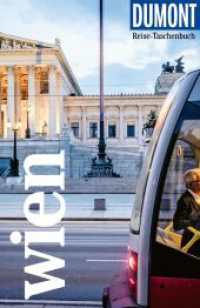基本説明
Examines how digital media and the Internet have changed the process of reading and writing, significantly altering our approaches toward research and reading, our assumptions about audience and responses, and our theories of memory, legibility, and context.
Full Description
In this study, Christian Vandendorpe examines how digital media and the Internet have changed the process of reading and writing, significantly altering our approaches toward research and reading, our assumptions about audience and response, and our theories of memory, legibility, and context. Reflecting on the full history of the written word, Vandendorpe provides a clear overview of how materiality makes a difference in the creation and interpretation of texts. Surveying the conventions of reading and writing that have appeared and disappeared in the Internet's wake, Vandendorpe considers various forms of organization, textual design, the use (and distrust) of illustrations, and styles of reference and annotation. He also examines the novel components of digital texts, including hyperlinks and emoticons, and looks at emergent, collaborative genres such as blogs and wikis, which blur the distinction between author and reader. Looking to the future, reading and writing will continue to evolve based on the current, contested trends of universal digitization and accessibility.
Contents
Series Preface -- Ray Siemens and Susan Schreibman vii
1. Introduction 1
2. In the Beginning Was the Ear 5
3. Writing and the Fixation of Thought 8
4. The Power of the Written Sign 10
5. Writing and Orality 12
6. Standards of Readability 15
7. Linearity and Tabularity 22
8. Toward the Tabular Text 28
9. Meaning and Effect 40
10. Filters in Reading 49
11. Textuality: Form and Substance 52
12. Textual Connections 56
13. Instances of Utterance 59
14. From Interactivity to the Pseudo-Text 63
15. Varieties of Hypertext 70
16. Context and Hypertext 77
17. The Limitations of Lists 80
18. Aporias of Hyperfiction 82
19. Reading Images 87
20. The Writer and Images 94
21. The Rise of the Visual 97
22. The Period, the Pause, and the Emoticon 102
23. Op. cit. 105
24. The Reader: User or Consumer of Signs/ 108
25. Intensive and Extensive Reading, or the Rights of the Reader 112
26. Metaphors for Reading 116
27. Representations of the Book 119
28. The Role of the Publisher 121
29. The CD-ROM and Nostalgia for teh Papyrus Scroll 123
30. Giving the Reader Control 125
31. Text and Interactivity 129
32. Managing Hyperlinks 131
33. I Click, Therefore I Read 133
34. The End of the Page? 136
35. On the Fragment 143
36. The Body of the Text 146
37. The Decline of the Novel 149
38. The Rise of the Blog 152
39. A Culture of Participation and Sharing 155
40. Toward the Universal Digital Library 159
Notes 167
References 177
Index 187





